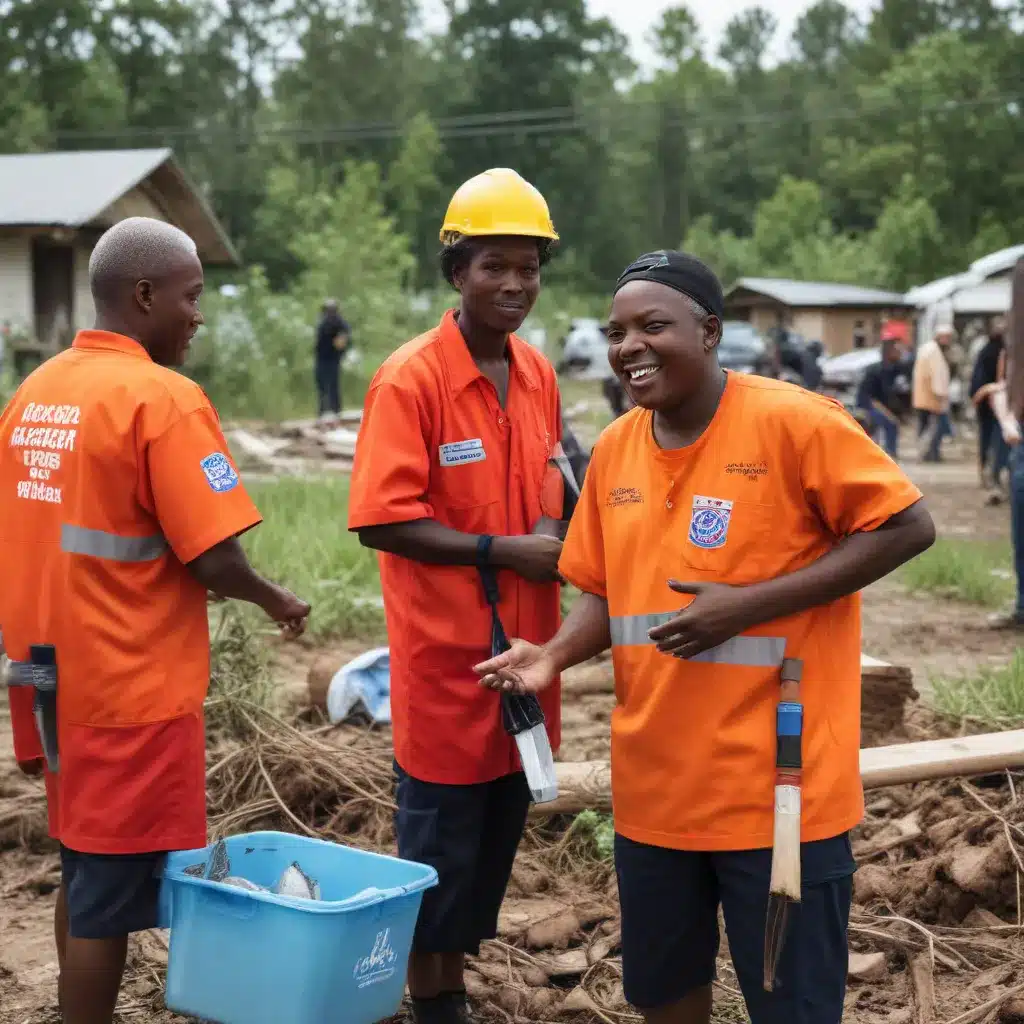
The Vital Role of Grassroots Efforts in Disaster Preparedness
As communities around the world face an increasing frequency and severity of natural disasters, the need for robust preparedness and rapid response has become paramount. While government agencies and large relief organizations play a critical role in disaster management, the power of grassroots, community-driven initiatives should not be underestimated. Community engagement and the harnessing of local knowledge and volunteer efforts can be the key to building resilient, self-reliant communities that can weather even the most devastating emergencies.
At the heart of effective disaster response lies the ability to leverage the unique strengths and resources of a community. Residents often possess invaluable, localized knowledge about their area’s risks, vulnerabilities, and resources – information that can significantly enhance preparedness and response efforts. Whether it’s understanding which neighborhoods are prone to flooding or knowing which neighbors may require special assistance, this community-level awareness is an asset that should be actively cultivated and incorporated into disaster planning.
Regular community meetings, workshops, and emergency drills provide platforms for residents to come together, share their insights, and collaboratively develop mitigation strategies. These interactions not only strengthen preparedness but also build a sense of solidarity and shared responsibility within the community – a vital characteristic when disaster strikes and communities must rely on one another for support.
Empowering Grassroots Disaster Response Teams
One of the most powerful expressions of community-driven disaster preparedness is the establishment of volunteer-led response teams. These grassroots initiatives, often known as Community Emergency Response Teams (CERTs) or Citizen Corps, harness the enthusiasm and commitment of local residents to augment the efforts of professional first responders.
CERT volunteers undergo basic-level training in emergency response, first aid, search and rescue, and other essential skills. When a disaster occurs, these trained community members can provide immediate assistance, organize spontaneous volunteers, and gather critical information to support the coordinated efforts of professional responders. This allows for a more rapid and effective response, as community members are already on the ground and familiar with local conditions.
The flexibility and adaptability of grassroots disaster response teams are key strengths. Unlike top-down, centralized approaches, these community-driven initiatives can quickly pivot to address evolving needs and changing circumstances. In the aftermath of a natural disaster, for example, a local CERT can mobilize quickly to provide emergency aid, while larger organizations may still be in the process of coordinating their response.
Fostering Cross-Sector Collaboration
Effective disaster preparedness and response require collaboration not only within the community but also across different sectors and organizations. Schools, businesses, faith-based groups, and local governments all have essential roles to play in supporting community resilience.
By working together, these diverse stakeholders can pool resources, share information, and coordinate their efforts more efficiently. A local business, for instance, might provide essential supplies or temporary shelter during an emergency, while a school could serve as a hub for disseminating information and coordinating volunteer activities. Faith-based organizations, with their deep roots in the community, can be instrumental in reaching vulnerable populations and offering support and comfort in times of need.
When these collaborative partnerships are established well before a disaster occurs, the community is better prepared to respond effectively when a crisis arises. Regular communication, joint planning, and a shared understanding of roles and responsibilities can ensure a more coordinated, efficient, and unified response.
Empowering Residents Through Communication and Engagement
At the core of successful community engagement lies effective communication. Residents should have access to clear, up-to-date information about the risks they face, the plans in place to address those risks, and the ways they can get involved in preparedness and response efforts.
Utilizing a variety of communication channels, from social media and local news outlets to community bulletin boards and neighborhood meetings, can help ensure that everyone in the community receives the necessary information. Encouraging open dialogue and feedback from residents can also help identify gaps in preparedness and provide opportunities for continuous improvement.
By listening to the concerns and ideas of community members, disaster response planners can develop more innovative and tailored solutions that truly meet the needs of the local population. This not only fosters a greater sense of ownership and responsibility among residents but also leads to more robust and effective preparedness plans.
Building a Culture of Resilience Through Volunteer Engagement
The importance of community engagement and volunteer involvement in disaster preparedness and response cannot be overstated. Grassroots initiatives driven by local knowledge, experience, and collaboration are essential to building resilient communities that can withstand and recover from emergencies.
As communities continue to face the growing threat of natural disasters, it is crucial that residents take an active role in preparing for and responding to these events. Whether it’s joining a CERT, participating in community drills, or simply sharing your unique local insights, every individual can contribute to the collective effort to keep their community safe.
By harnessing the power of community volunteers, we can create a culture of resilience – one where residents are empowered, informed, and united in their commitment to protecting their neighborhoods and supporting one another in times of crisis. This grassroots approach, combined with the resources and expertise of larger organizations, can be the key to building a more secure and sustainable future for all.
To learn more about how you can get involved in community-based disaster preparedness efforts, visit https://jointactionforwater.org/. Together, we can create a safer, more resilient world.

